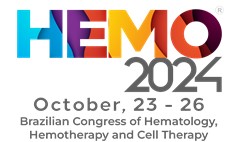
XVI Eurasian Hematology Oncology Congress
More infoSecondary thrombocytosis is a well-recognized response to chronic inflammation, infections, and systemic disorders, but its association with dermatologic diseases such as Norwegian scabies and epidermolysis bullosa is rare. In severe cases of epidermolysis bullosa, therapeutic apheresis may be used as part of supportive care. This case highlights a young patient with extreme thrombocytosis managed with myelosuppressive therapy and therapeutic apheresis for epidermolysis bullosa.
Case presentationA 20-year-old female with Norwegian scabies and epidermolysis bullosa was admitted due to fatigue and worsening skin lesions. Laboratory findings included severe thrombocytosis (PLT: 947,000 µL), microcytic anemia (Hb: 8.3 g/dL, MCV: 69.6 fL), elevated inflammatory markers (CRP: 118 mg/L, sedimentation rate: 63 mm/h), and positive direct Coombs test. Imaging revealed multiple mildly enlarged lymph nodes (axillary, inguinal, iliac) and hepatosplenomegaly, but bone marrow biopsy showed normocellular marrow with increased megakaryocytes. Molecular testing for JAK2, CALR, MPL, and BCR-ABL mutations was negative, ruling out Essential Thrombocythemia (ET) and Chronic Myeloid Leukemia (CML). Since the patient’s thrombocytosis was determined to be secondary to chronic inflammation, she was treated with Hydroxyurea (Hydrea) 2 × 500 mg/day and aspirin, leading to a gradual decrease in platelet counts, confirming a reactive process rather than a primary hematologic disorder. Concurrent corticosteroid therapy for epidermolysis bullosa resulted in significant improvement in dermatologic symptoms and inflammatory markers. Given the severity of epidermolysis bullosa, therapeutic apheresis was performed as part of supportive treatment, contributing to clinical stabilization and symptom relief.
ConclusionThis case underscores the importance of differentiating secondary thrombocytosis from primary myeloproliferative disorders and highlights therapeutic apheresis as a supportive intervention in severe epidermolysis bullosa. It emphasizes the role of multidisciplinary management, where targeting the underlying dermatologic inflammation can help control hematologic abnormalities. In complex inflammatory disorders, therapeutic apheresis may serve as an adjunct therapy, improving patient outcomes.






